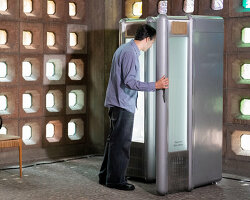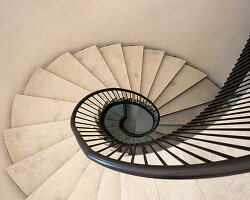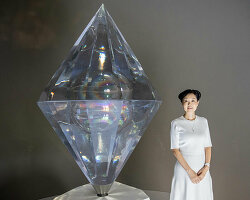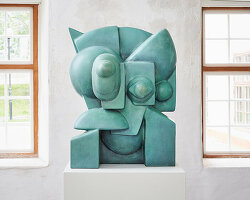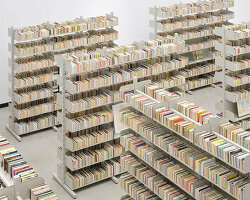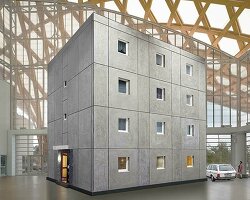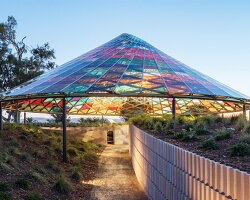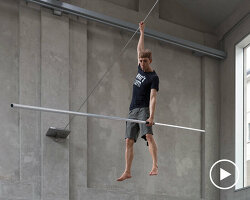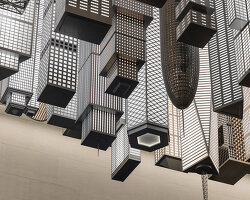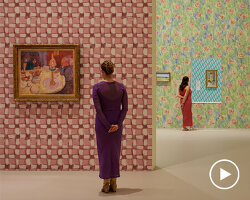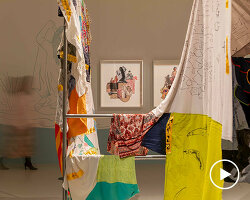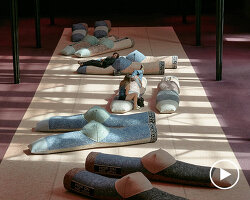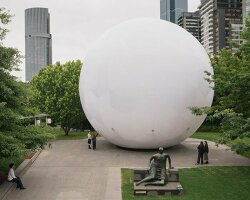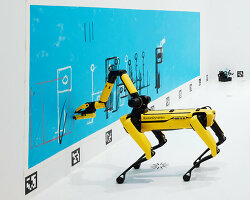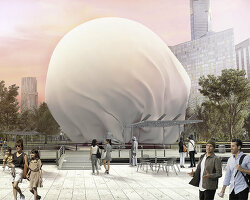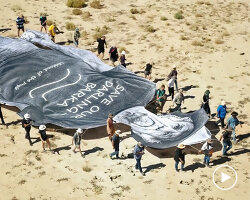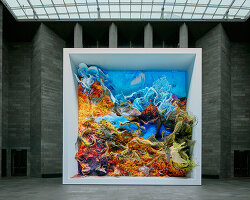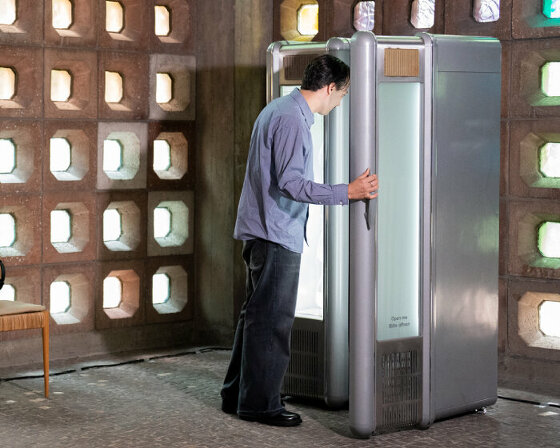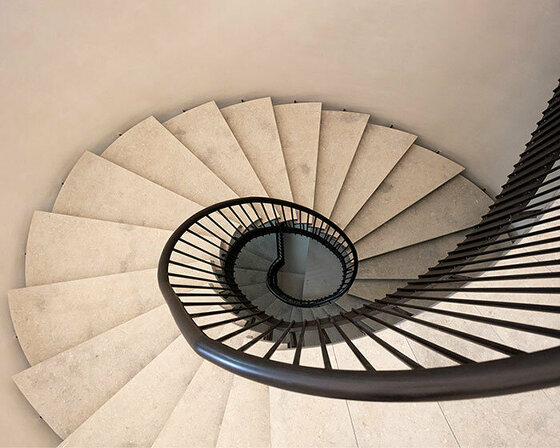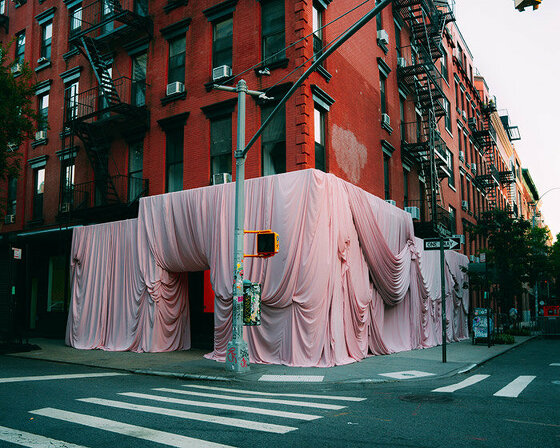Elmgreen & Dragset at the national gallery of victoria
During the National Gallery of Victoria (NGV) Triennial, Berlin-based artist duo Elmgreen & Dragset presented four iconic sculptural works, each crafted from distinct mediums and expressing unique themes. These pieces have now been acquired to enrich NGV’s permanent collection, marking the duo’s debut in an Australian public museum. The selection includes a variety of works, including an all-white sculpture of a painter, a hyperrealistic human figure suspended from the ceiling, a reflective stainless steel sculpture of a photographer on a balcony, and a pile of clothes and underwear in a corner that piques curiosity.
‘The sculptures were chosen in close dialogue with the NGV, who wanted to include four sculptures that distinctly represented the different ways we deal with figuration,’ the artists reveal. To celebrate this milestone, designboom interviewed with the artists, delving into this significant moment in their careers and their artistic perspectives. ‘We try to leave our works as open to interpretation as possible and like to see the audience as an active component in completing the narratives,’ Elmgreen & Dragset share. Read the interview in full, below.
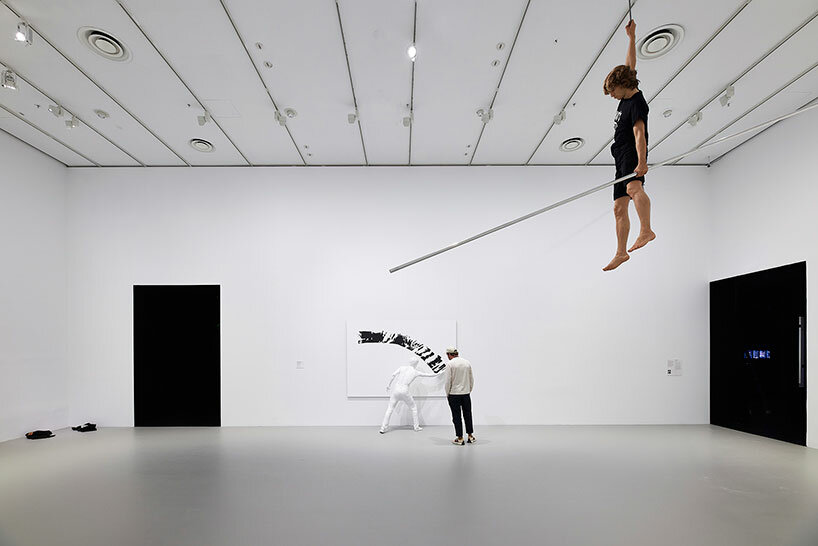
installation view of Elmgreen & Dragset’s work in NGV Triennial at NGV International, Melbourne | photo: Sean Fennessy
interview with Elmgreen & Dragset
designboom (DB): What were the criteria used in choosing the four sculptures shown and to be permanently acquired by the NGV Triennial? Why were these four chosen out of all your work?
Elmgreen & Dragset (E&D): The sculptures were chosen in close dialogue with the NGV, who wanted to include four sculptures that distinctly represented the different ways we deal with figuration. The earliest sculpture, a readymade consisting of two pairs of jeans and underwear lying directly on the floor is gestural and very straightforward (Powerless Structures, Fig.91). The white lacquered bronze work, The Painter, Fig.1, demonstrates how we play with the visual language of both classical sculpture and modernist art ideals in our practice. The polished stainless steel photographer, The Examiner, literally reflects its surroundings and is an example of how we sometimes reverse the idea of voyeurism in our art, as well as our preoccupation with the line between inside and outside, inclusion and exclusion. What’s Left?, the fourth sculpture, is a hyper-realistic figure made of silicone and human hair, dressed in typical street clothing. This sculpture refers back to our origins as performance artists and creates a different kind of performative tension between viewer and artwork—there’s a sort of storytelling involved, an implied before and after.
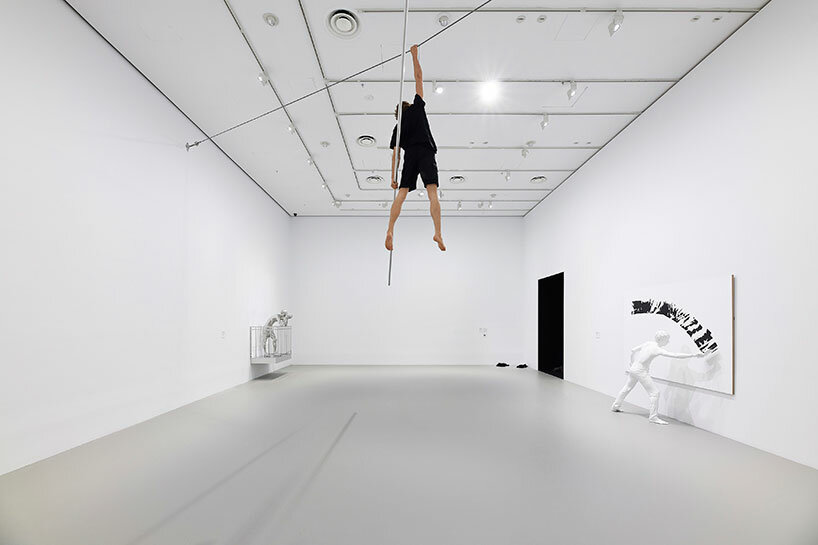
installation view of Elmgreen & Dragset’s work in NGV Triennial at NGV International, Melbourne | photo: Sean Fennessy
DB: From your own interpretation, can you share what came before and what happened next to each of the four sculptures chosen for the new permanent collection?
E&D: We try to leave our works as open to interpretation as possible and like to see the audience as an active component in completing the narratives. We are very inspired by films, but find that they often dictate the audience’s thoughts and feelings about different characters and situations. Sometimes it feels as if we are being told too much and that there’s not enough room left for one’s own interpretation. As a kind of antidote to this, we provide only hints about our characters and their stories. If a viewer can come away their own ideas about a certain work, that’s only a good thing.
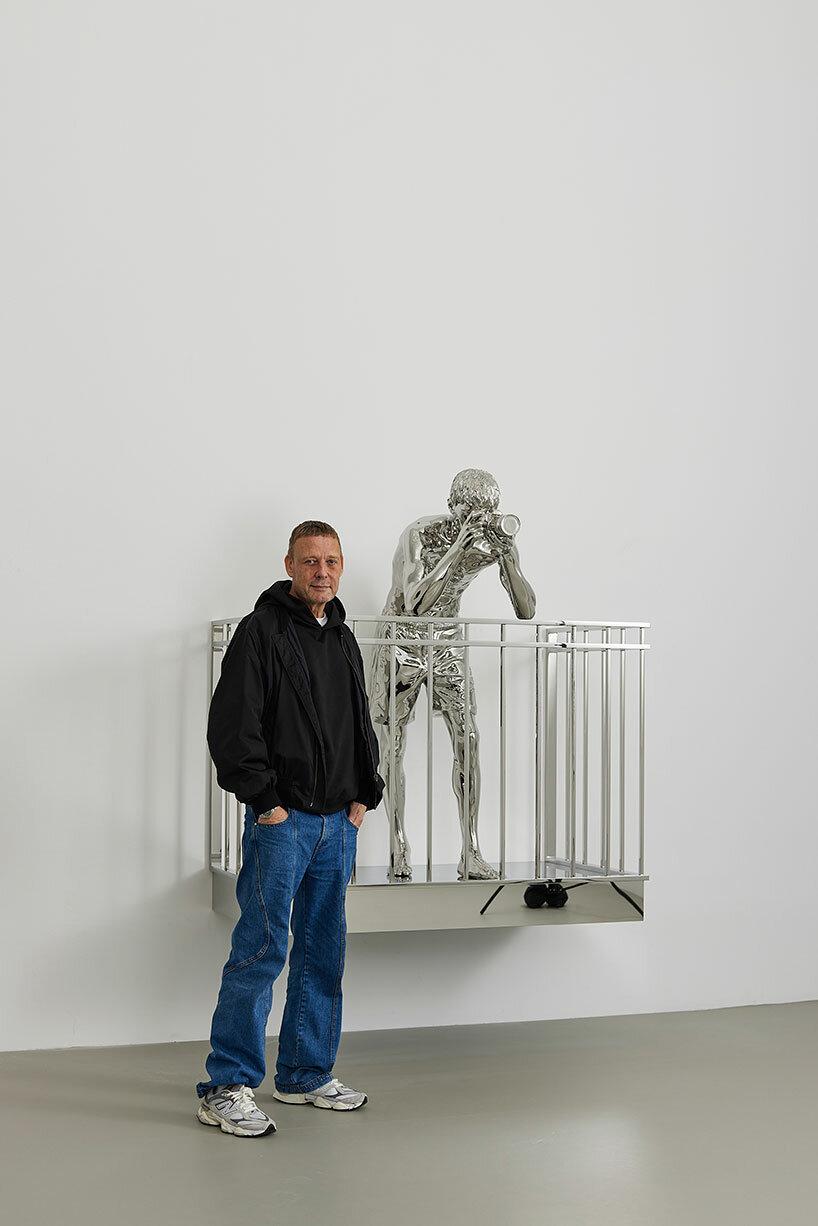
Michael Elmgreen with the Elmgreen & Dragset work The Examiner 2023 on display in NGV Triennial at NGV International, Melbourne | photo: Amelia Dowd
DB: What kinds of materials do you usually work with and have you encountered challenges with any specific ones? Are there any new materials you’re interested in exploring for future projects?
E&D: We work in a number of materials, from silicone to stainless steel to marble, just to name a few. We occasionally experiment with rendering the same motif in a variety of materials. For instance, a sculpture made of realistic silicone versus marble evokes distinct associations—and viewers react to them differently—even if the pose and expression are otherwise identical. Currently, we are working on a new set of sculptures in glass. It’s a compelling material both due to its translucency and fragility but also because it is challenging to control; it almost takes on a performative quality in its fluidity.
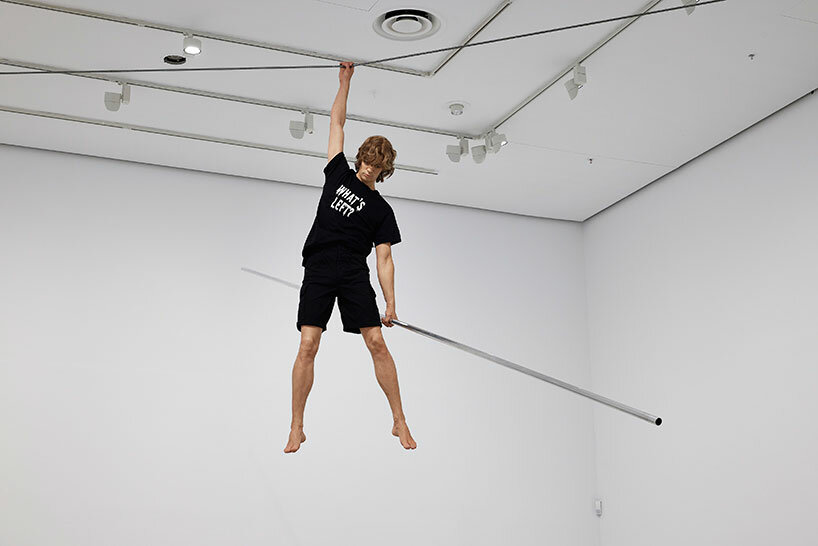
installation view of Elmgreen & Dragset’s work What’s Left, Fig. 2, purchased with funds donated by Barry Janes & Paul Cross, on display in NGV Triennial at NGV International, Melbourne | photo: Sean Fennessy
DB: Do you have specific social themes you aim to address through your sculptures?
E&D: Throughout our thirty years of collaboration, we have of course addressed a number of themes, often directly related to the site where a work is first exhibited. But some general threads can be found through our oeuvre, such as queer issues, social exclusion, loneliness, the challenges of childhood, spatial control mechanisms, the role of the body in the digital era, and the shifting borders between private and public. The Examiner is a unique expression of some of these themes. Like in many of our sculptures, this work depicts a solitary male figure. Here, he is alone on a balcony, an architectural element that occupies a fascinating space hovering somewhere between private and public. With his camera, there is also a strange sense of being watched.
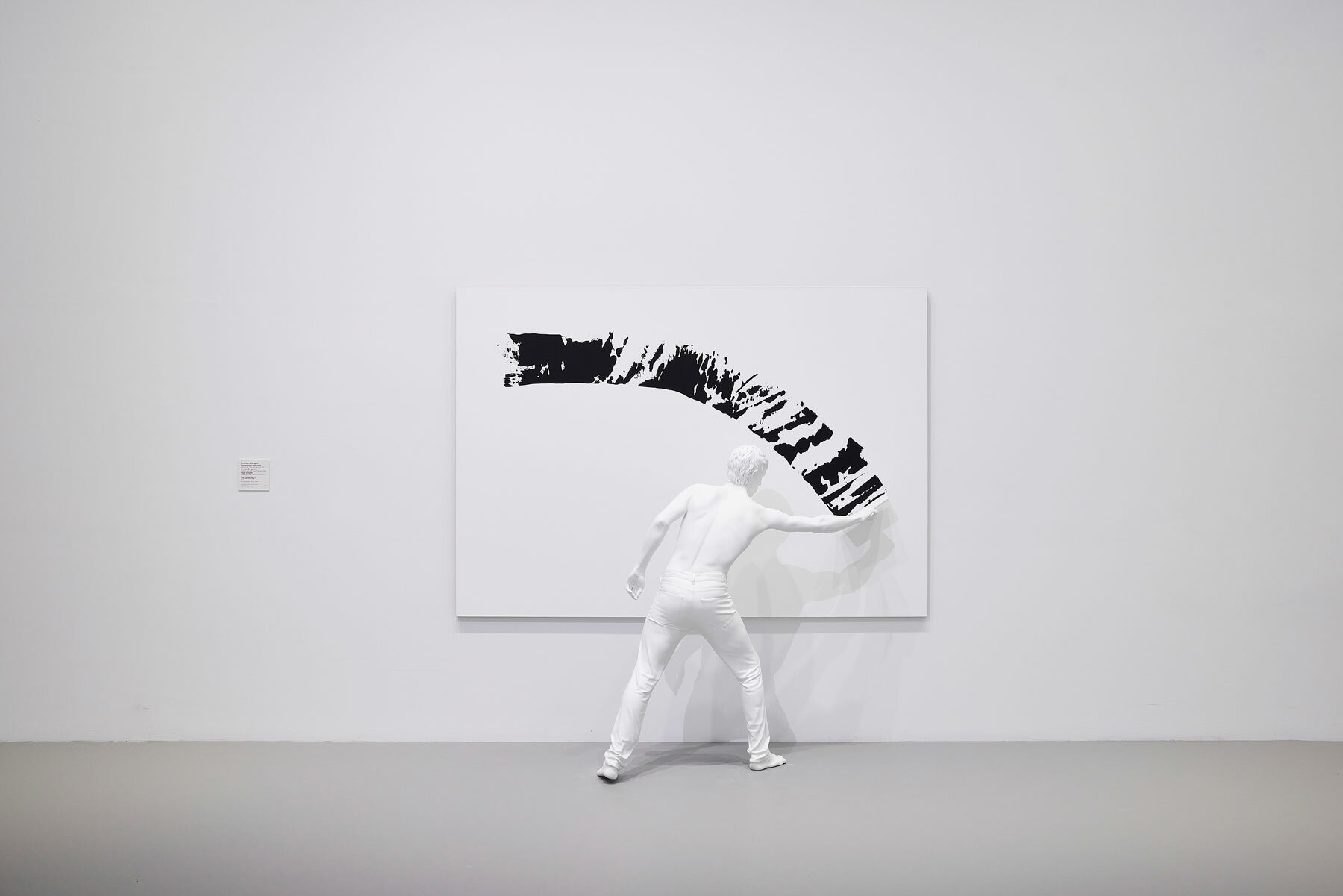
installation view of Elmgreen & Dragset’s work The Painter, Fig. 1, purchased with funds donated by Michael & Emily Tong, on display in NGV Triennial at NGV International, Melbourne | photo: Sean Fennessy
DB: You mentioned in the video that your sculptural works are based on the reaction you feel and give to what’s happening around you. What led you to choose sculpture as your primary medium for expressing these reactions over other art forms?
E&D: Sculpture is only one of the mediums we use, and even when we make them, they often relate to space in specific ways. Again, as former performance artists, we are interested in the tension between our bodies and personal space in relation to the larger public sphere. We have always been concerned with how our bodies are controlled by both societal norms and architectural structures. Sculpture is a useful medium for exploring this process; when we create life-size, realistic sculptures, their mere presence can raise questions about or highlight certain aspects of the space they are in.
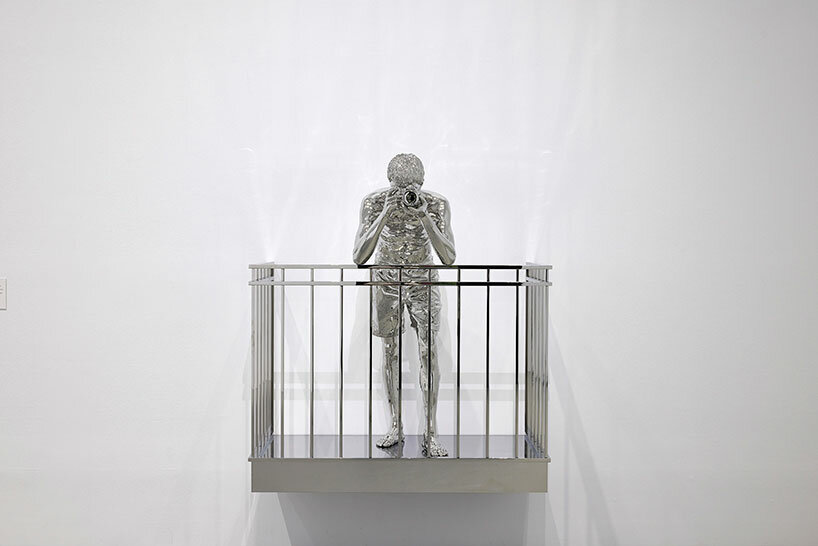
installation view of Elmgreen & Dragset’s work The Examiner, acquired by the Felton Bequest, on display in NGV Triennial at NGV International, Melbourne | photo: Sean Fennessy
DB: Have you noticed any shifts in the perceived value of social sculptures over time? If so, in what ways?
E&D: We’ve noticed a growing interest in sculpture in recent years, particularly in public spaces. As the world has moved more and more online, there seems to be a simultaneous realization that we also have the need to gather physically, around something that is tangible, present, and can bring about some sense of ‘togetherness.’ Even if there’s disagreement over the artwork itself, having something to disagree about can create a sense of community. Our public sculpture Han, which is located along the water in Elsinore, Denmark, is based on The Little Mermaid sculpture in Copenhagen but takes the form of a young man. Before it was unveiled, it ignited a debate on how masculinity should be presented, considering the site was part of a former shipyard. Some people were against the sculpture, but we were nevertheless heartened to see that public art can cultivate a space for such conversations. And in the end, when the sculpture was finally installed, lots of people showed up for the inauguration, and were discussed other things, such as the material, the finish, and the way the sculpture reflected the city and the sea.
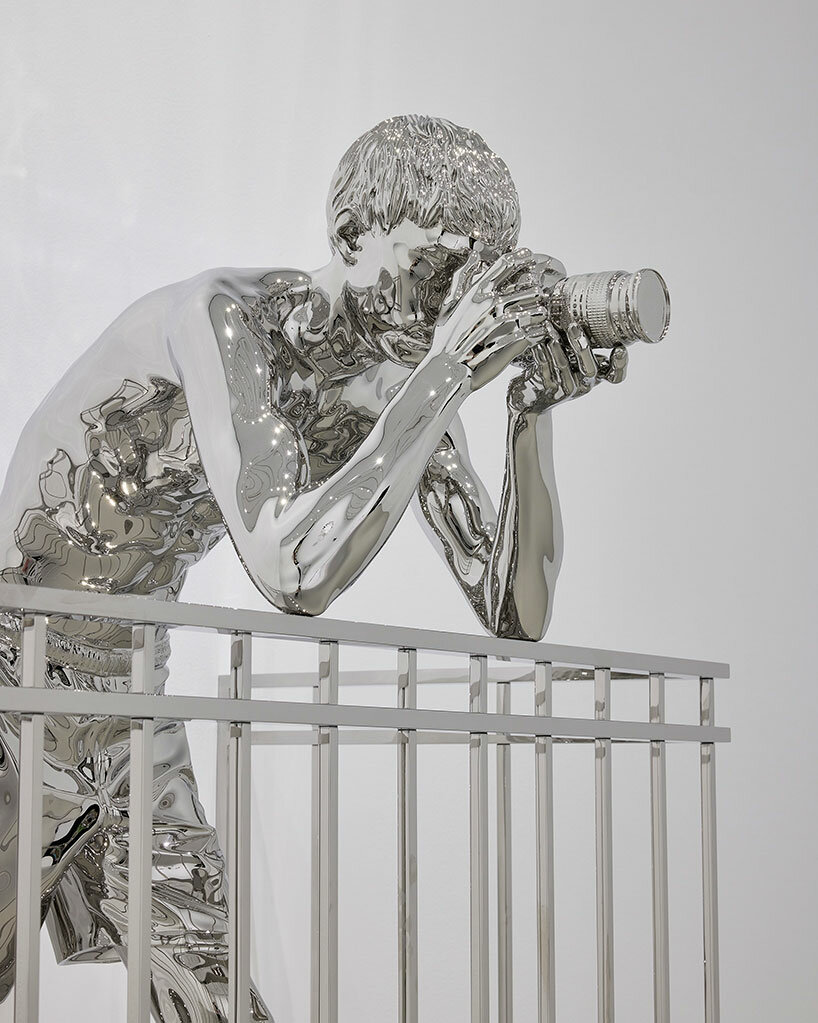
installation view of Elmgreen & Dragset’s work The Examiner, acquired by the Felton Bequest, on display in NGV Triennial at NGV International, Melbourne | photo: Sean Fennessy
DB: These four sculptural works at the NGV Triennial are your first pieces to enter an Australian public museum. How do you feel about this? Are you looking into growing your permanent collections for museums around Australia?
E&D: We are not actively working on promoting our own art in that way, but we would of course be very happy to enter dialogues with other Australian institutions. As for the presentation of our work at NGV, it is always nice to see our work in museums that contextualize it in new ways. For the Triennale, it was interesting to see four of our sculptures, each in distinct mediums, displayed together for the first time.
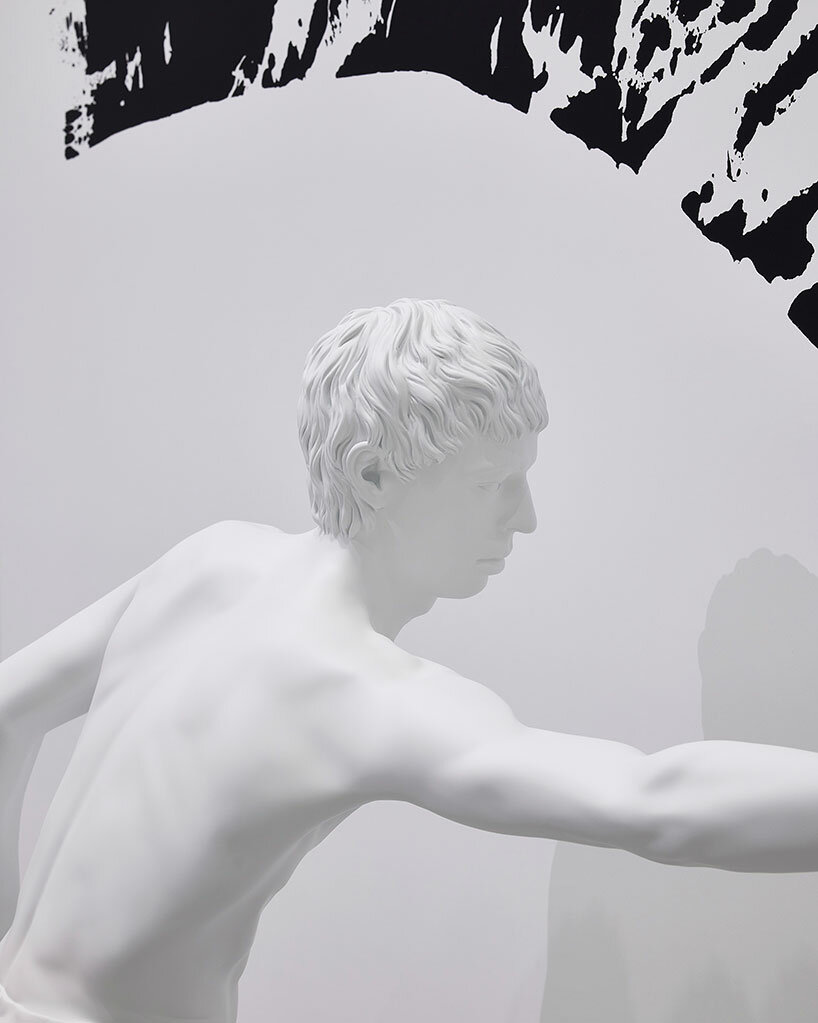
installation view of Elmgreen & Dragset’s work The Painter, Fig. 1, purchased with funds donated by Michael & Emily Tong, on display in NGV Triennial at NGV International, Melbourne | photo: Sean Fennessy
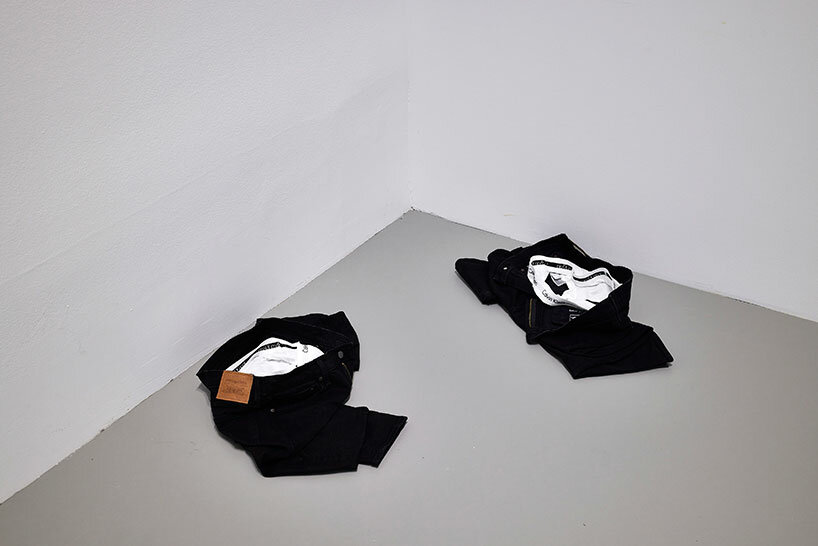
installation view of Elmgreen & Dragset’s work Powerless Structures, Fig. 91, purchased by NGV Foundation, on display in NGV Triennial at NGV International, Melbourne | photo: Sean Fennessy
art interviews (138)
elmgreen & dragset (22)
national gallery of victoria (18)
NGV triennial (18)
PRODUCT LIBRARY
a diverse digital database that acts as a valuable guide in gaining insight and information about a product directly from the manufacturer, and serves as a rich reference point in developing a project or scheme.
